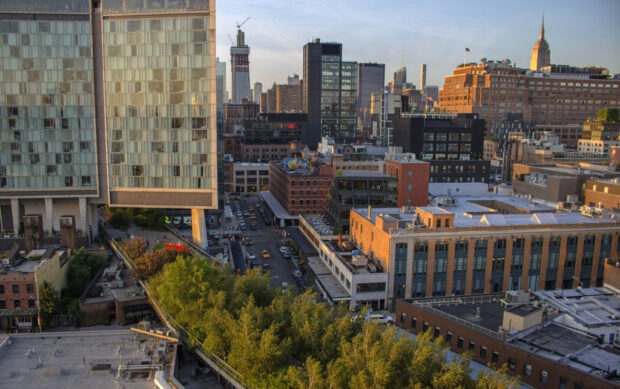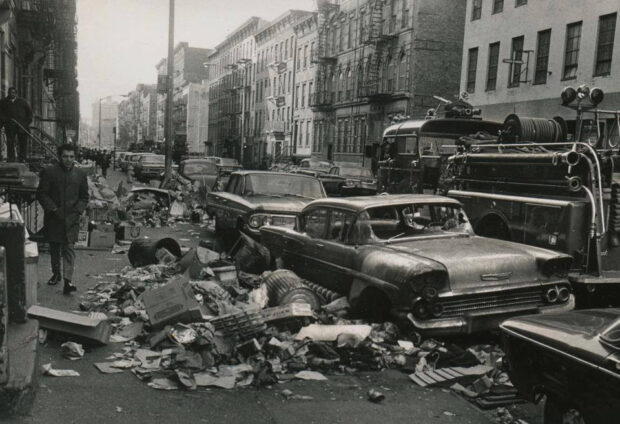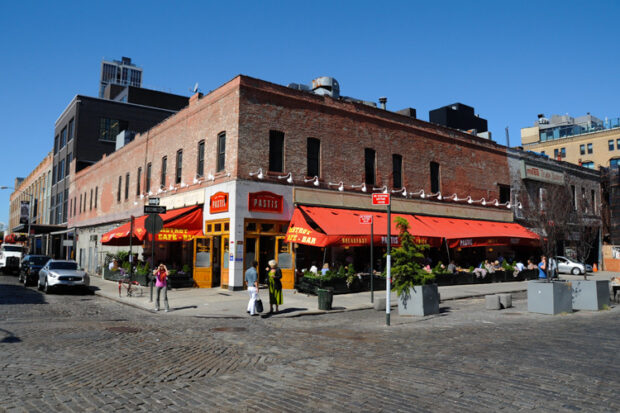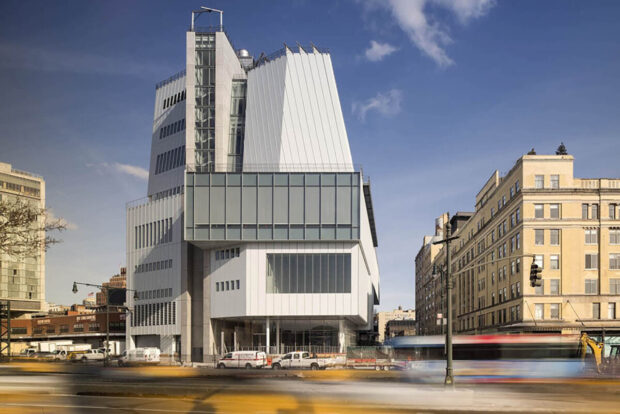Bases, warehouses, garages, shops. As you passed by, you saw meat carcasses hanging from hooks in the open gate, mountains of vegetables/fruits, and seafood. The narrow streets were always filled with trucks that brought and carried all kinds of snow. Many of the city’s restaurants bought fresh food every day, but private citizens could buy imported strawberries, Colombian shrimp – whatever they wanted – without much damage to their purses.
Meatpacking is a small area in the western part of Lower Manhattan in New York City.

The Meatpacking district covers a number of blocks and is bounded south of 14th Street, north of Gunsworth Street – Gansevoort Street, east of Hudson Street – Hudson Street, and west of the Hudson River.
The area is known today as Meatpacking District, that is, in translation with the English «Meat-making Quarter» that began to develop in the 19th century.
READ 15 Best Places in Winter New York
Due to its convenient location on the bank of the river – in the area of the present quarter Meatpacking began to actively develop light industry enterprises such as leather making, woodworking, and especially there was a concentration of slaughterhouses in the area, Meat-cutting shops, butcher shops, and farmers’ markets.
The proximity to the river allowed the butchers to easily dispose of short-term waste. The first line of construction on the Hudson River in the 19th century was built entirely by industrial buildings and warehouses, and the streets of the neighborhood closer to the middle of Manhattan were built by townhouses inhabited by business owners and their employees.
By the end of the 19th century, during America’s industrialization, a railroad line was laid along the entire Hudson coast, and the area was transformed into a loading and unloading terminal, where goods of various purposes were trans-shipped to railway wagons and shipped inland.
In the same years, the Meatpacking residential development has undergone some changes, giving preference to three- to four-story apartment buildings for more families than to townhouses for one family. Today, a large number of middle-level brick residential buildings of the 19th century have been preserved in the area.
READ Brooklyn: an Area With a Rich Past
After a significant decline in entrepreneurial, manufacturing, and trading activity during the Great Depression, with many workshops and warehouses abandoned, the city resorted to its reconstruction, and as in many other parts of Manhattan, A large part of the production buildings in the Meatpacking district has been converted into lofts and used for housing needs.

In the 1970s, when industrial development and new refrigeration technologies made it possible to eliminate the need to slaughter and cut cattle in the immediate vicinity of sales outlets, meat processing in the Meatpacking area disappeared, leaving a reminder of the district name.
In the 1980s, the vacated production space began to be actively occupied by New York’s numerous nightclubs, most of which were then run by numerous urban mafia clans.
As a result, by the mid-1980s the area had become known as a center for New York drug trafficking and prostitution. Following efforts by the city and the New York City Police Department, some of the clubs were closed.

As a consequence, in the 1990s, the Meatpacking District underwent another cycle of transformation, within a few years, with low rents, sometimes set to zero, the district attracted shops of the most famous designers and trademarks, such as Christian Labuten, Alexander McQueen, Stella McCartney, Moschino, Ed Hardy, and Apple.
Behind them, many popular restaurants of New York City, such as «Pastis» and «5 Ninth», fashionable nightclubs, exhibition galleries, and expensive boutique hotels, became located in the area. The result of such transformation was that in 2004, the authoritative magazine «New York magazine» named Meatpacking District – the most fashionable district of New York City.
READ Books and Films: What to Watch and Read Before a Trip to New York City
Over the last ten years, the Big Apple area, called Meatpacking District, has changed dramatically. What was here before? Bases, warehouses, garages, shops. As you passed by, you saw meat carcasses hanging from hooks in the open gate, mountains of vegetables/fruits, and seafood. The narrow streets were always filled with trucks that brought and carried all kinds of snow. Many of the city’s restaurants bought fresh food every day, but private citizens could buy imported strawberries, Colombian shrimp – whatever they wanted – without much damage to their purses.

Whitney Museum built its new building here. The building has 200,000 square feet. The architect is Renzo Piano.
The building was located near the southern entrance on the High Line and provided the museum with new exhibition spaces for the permanent collection, funds, temporary exhibitions, and educational programs.
The Whitney Museum, the Manhattan Center Museum of Art on Madison Avenue, has always been located between Gansevoort Street and West Street over 50,000 square meters of galleries and 13,000 square meters of a rooftop, where the works of American artists were exhibited from the invaluable collection of the museum of the 20th and 21st centuries, which has more than 18,000 works. The gallery on the ground floor is free of charge. The main exposition and long-term projects are located on the top floor.
Like us on Facebook for more stories like this: